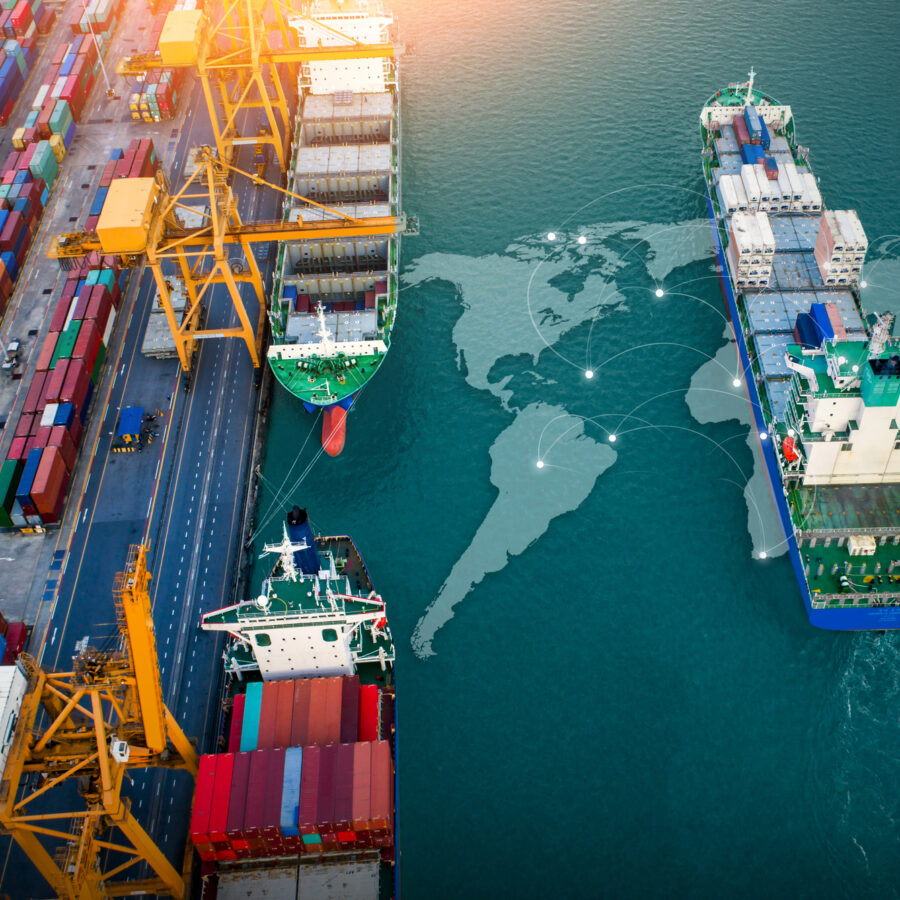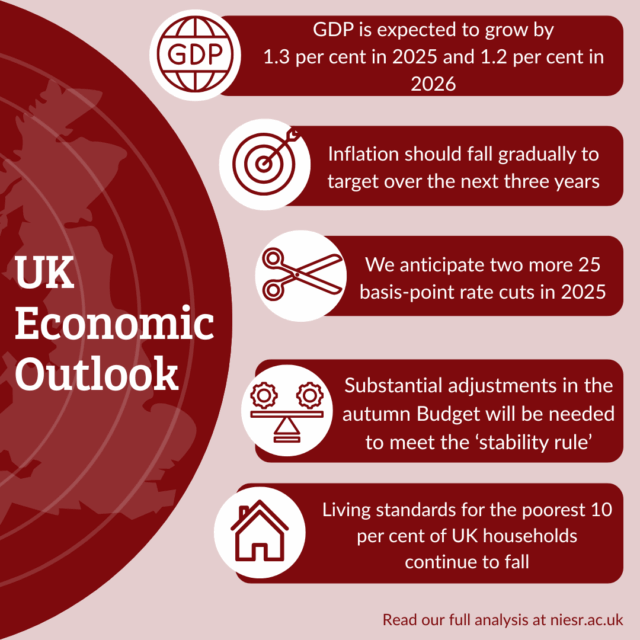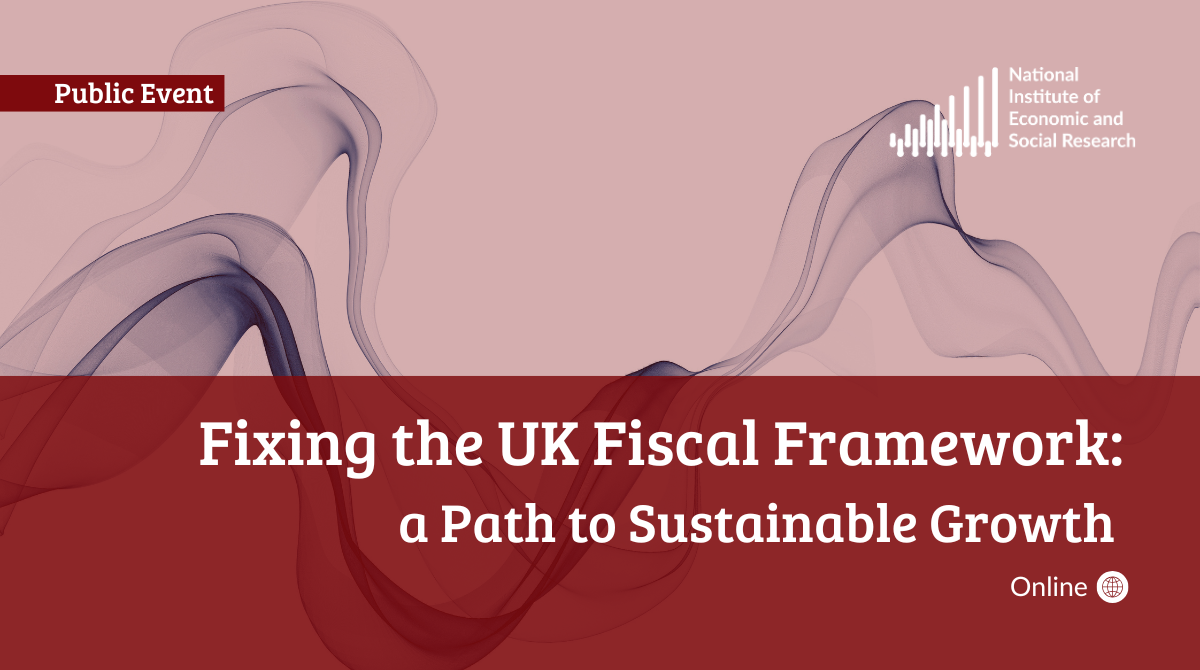Beyond Tariffs: What Next for The Global Economy?
With much of the focus being on the impact of tariffs on world trade, there has been little discussion about the wider effect of policy uncertainty on both the advanced and emerging economies. Ahead of the publication of our summer Global Economic Outlook, Monica George Michail explores some of the issues affecting the world economies and offers some thoughts around upcoming threats to growth.

What are the key challenges facing the global economy as the year unfolds?
The global economy is facing significant challenges, primarily influenced by shifts in the US trade policy, huge uncertainties around future US policies, high level of public debt levels, in addition to the structural challenges leading a general slowing of economic growth.
Global growth has been gradually slowing since the post-pandemic recovery in 2021 and is particularly threatened this year onwards by the considerable rise of protectionist trade policies implemented by the US President Trump. Recent US import tariffs represent a major change to the postwar international trade system, with significant global repercussions.
Given that, we forecast global trade growth and economic growth to fall noticeably this year and the next. In fact, excluding the Covid-hit year of 2020, the global economy may have one of the weakest growth rates since the Global Financial Crisis this year.
We estimate that the current United States import tariffs could reduce global GDP by 1.1 per cent by 2030 compared to a non-tariff baseline, with the most impacted countries being Mexico (-3.5 per cent), the United States (-2.5 per cent), and Canada (-2.7 per cent). China will also face as sizeable negative impact over time, while the Euro Area will only be moderately affected. More analysis on the channels of impact of US tariffs was discussed in this topical feature.
The global economy is also facing a significant elevation in public debt levels. President Trump’s proposed mega-bill and the European Union’s plans to increase defence spending will further raise government debt, raising concerns regarding economic and financial stability over the medium term.
Many commentators have framed the recent US ‘trade deal’ with the EU as a political win for Trump. But does it also represent a meaningful victory from an economic standpoint?
Yes and no.
Let’s start with the “no”. These tariffs are essentially a tax on US consumers. And under this deal, US consumers will still face a 15 per cent tariff on EU imports, much higher than the pre-Trump level of just 2–3 per cent. This will eventually translate to higher prices for imported goods and potentially fewer varieties for consumers. In other words, consumers will still bear a significant cost. Moreover, because consumers will pay a higher share of their income on imported goods, they will have less money to spend on locally produced goods. This means potentially lower demand for domestic goods, which may also affect American producers. All in all, it is hard to call it a “win” for US citizens.
On the more positive side, under the most recent deal US consumers will face a 15 per cent tariff rate on EU products, rather than the previously announced 30 per cent.
US producers may gain. Not only will they have an advantage in the domestic market against their European counterparts, but they will also face zero tariffs when exporting to the European Union.
The deal also involves around $600 billion of additional investment from the European Union into the US economy and $750 billion worth of US energy exports to the EU by 2028, with no reciprocal requirement. And lastly, the European Union has committed to buy US-made weapons, which may give another boost to American defence companies.
So, what’s the catch? The main issue is the lack of clarity. What exactly counts as “investment”? Will EU purchases of US financial assets like stocks and bonds be included in that $600 billion figure? Or are we talking strictly about foreign direct investment (FDI)? If it’s the latter, is that level of investment realistic? Achieving this value of FDI would require more than doubling current levels, given that Europe (excluding the United Kingdom) direct investment in the United States was around $152 billion in 2024. Moreover, how will the European Union force individuals and companies to invest in the United States in the first place?
Similarly, how binding or realistic are the energy and defence commitments? Without clear mechanisms or benchmarks, these numbers risk being more political theatre than economic reality.
Bottom line: There are certainly winners among US producers, but also a lot of unanswered questions.
Looking ahead, will the trade deals being implemented help reduce uncertainty around tariffs?
Not necessarily.
While recent trade deals give the impression that tariff-related uncertainty is declining, President Trump’s policies are unpredictable and constantly changing. Therefore, we cannot rule out future changes in existing deals or the introduction of new ones, which could trigger retaliatory actions.
Tariffs are also not the only source of economic uncertainty. US domestic policies, especially with regards to the deportation of illegal migrants, could have significant impacts on the US labour market, with possible spillovers to neighbouring countries.
On the international front, wars in the Middle East and Ukraine are still ongoing, with potential impacts on energy prices and global trade flows.
In short, while the signing of trade deals represents some short-term stability, we are still experiencing a highly unpredictable environment.
Are there specific developments we should watch that could impact the global economy in the short to medium term?
Besides trade developments, several other significant developments warrant close monitoring for their potential implications on the global economy in the coming years.
Firstly, the geopolitical environment remains highly volatile. This was notably highlighted by the 12-day conflict between Israel and Iran in June 2025. And while a US-brokered ceasefire de-escalated the tensions and brought oil and gas prices back down, there is ongoing vulnerability that could reignite conflict, with potential implications on energy prices, shipping costs and supply chains globally. Concurrently, the war between Russia and Ukraine continues with stalled peace talks and persistent spillovers for the global economy. These conflicts contribute to heightened geopolitical risk and uncertainty.
Additionally, public debt levels in advanced economies are at historical highs, raising growing concerns. Despite that, fiscal policies are generally expected to remain expansionary, raising issues regarding fiscal sustainability, which has already contributed to increased long-term government bond yields. This limits the space for further accommodative fiscal policy and increases the difficulty for governments to manage their substantial debt burdens.
Increased military spending, particularly in the Euro Area, also presents a key development. The EU’s “ReArm Europe” plan aims to mobilise up to €800 billion in defence and military investment for member economies. Germany, in particular, has enacted a substantial fiscal spending package enabling up to €1 trillion in additional borrowing over the next decade for defence and infrastructure spending, a loosening of their strict fiscal rules. Analysis by my colleagues Ahmet Kaya and Patricia Sanchez-Juanino projects this stimulus to add about 0.5-0.6 percentage points to Germany’s annual GDP growth from next year onwards and create small but positive spillover effects across the Euro Area. While potentially inducing some inflationary pressure and raising debt levels, these efforts could support economic activity.
Meanwhile, the Chinese economy has demonstrated resilience, maintaining momentum despite US import tariffs. This has largely been sustained by large-scale monetary and fiscal stimulus measures implemented since the latter half of last year. Although GDP growth was robust in the first two quarters of 2025, the path ahead is less certain. Our forecasts anticipate a dampening effect on growth, particularly in 2026, as tariffs weigh on exports and existing structural challenges persist.
Looking further ahead, technological advancements, specifically in Artificial Intelligence (AI), could potentially offer significant productivity gains and represent an upside risk to global economic growth.
Lastly, climate change is increasingly shaping the global economic environment, not just through rising temperatures and extreme weather, but also through the policies designed to combat it. Economists warn of the detrimental impact of increasing climate related events such as heatwaves, floods, and droughts, which could result in significant economic losses. At the same time, climate policies like carbon pricing and clean energy incentives are triggering an economic shift. While the transition will bring short-term costs, such as job displacement in some sectors, it also unlocks new growth opportunities in energy efficiency and climate-resilient infrastructure.























